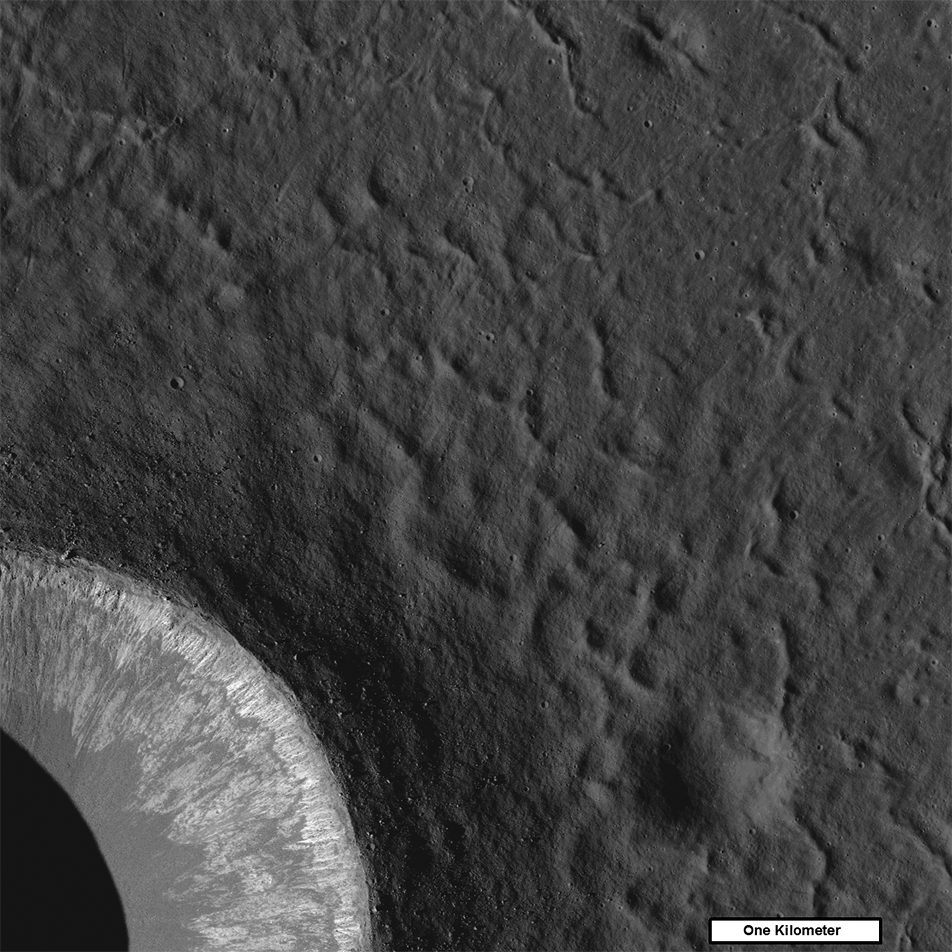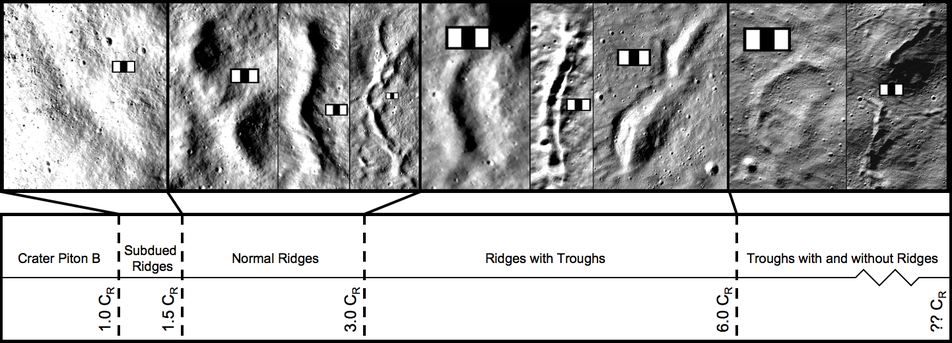
There are numerous types of landforms found in the ejecta blankets of impact craters, including features described as crater concentric ridges (CCR). CCRs are small, dune-like ridges that form around lunar craters one to ten kilometers in diameter. These ridges are only found around the youngest craters in this size range, suggesting that such ridges may have formed around many or all craters of this size, but degrade rapidly (on a geological time scale) so we can only find them around the youngest examples. The largest and most densely packed CCRs are found approximately one crater radius from the rim, and they become both smaller and more widely spaced moving further outward. In some cases, CCRs far from the crater have associated downrange troughs.

The formation of CCRs is strongly affected by different factors such as their location (mare vs. highlands) and the size of their host crater. Around craters in the lunar mare, such as Piton B (pictured above), CCRs form a roughly radially symmetric pattern all the way around the crater. However in the lunar highlands, where craters form on more rugged topography, CCRs sometimes form only in a limited range around the crater, and their spacing and sizes seem to be affected by the underlying topography in a way that is not well understood. Additionally, the CCRs are generally larger and more densely packed around larger craters.
Several ideas for the formation of these features have been proposed. In one scenario, the ejecta of the crater may flow against the ground until it encounters a topographic obstacle, where it piles up. The impact itself could even create new topographic obstacles as its shock wave radiates outward, possibly reactivating subsurface fractures and resulting in uplift along these fractures, which would then impede ejecta flow. Alternately, the CCRs could form due to interference between shock waves in different segments of the flowing ejecta, so that the CCRs are produced by an interference pattern. The new observations of CCRs from LROC data will be compared with computer simulations in order to evaluate these hypotheses for their formation.
For a detailed discussion on CCRs, see the article published as part of the new LRO special issue of Icarus:
Atwood-Stone, C., V. J. Bray, and A. S. McEwen (2016) A new study of crater concentric ridges on the Moon, Icarus 273,196-204. doi:10.1016/j.icarus.2016.03.012.
Related Featured Images:
Published by Brett Denevi on 2 June 2016